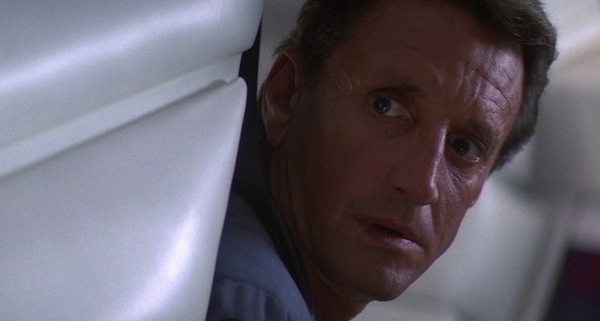Everyone agrees that Stanley Kubrick’s 2001: A Space Odyssey is a classic. But I’m here to praise the underrated, even abused sequel, Peter Hyams’ 2010.
There are similarities, of course, as you’d expect from an original and its sequel. The special effects in both films are spectacular, and fairly well grounded in the science of the time. The relevant designs of 2001 are accurately replicated in 2010, so that if you watch them back to back, the continuity is pretty seamless. Both begin in the past, and end with moments of transcendence.
But the tonal difference is total.
In many ways, 2010 is the total antithesis of Kubrick, and I think that accounts for part of its less-than-stellar (no pun intended) critical reputation. Kubrick’s film is all intellect, a cold and sterile depiction of Man (as opposed to a man) journeying into the future with the help of discreet alien intervention. To fully understand it, you have to read Arthur C. Clarke’s novel, which I suppose is one big indicator of its serious intellectualism.
2010, on the other hand, is all about emotions. Its primary focus is character relationships: Floyd and Kirbuk; Chandra and HAL; HAL and Bowman; Curnow and Max. The film filters everything through its people, whereas Kubrick filtered his people through their technology, thus equating them with their machines, whether a spaceship or an animal’s bone. Even the aliens, for Kubrick, are only known by their devices (the monoliths). In 2010, though, the aliens’ presence is demonstrated through their relationship with the humans (such as Bowman’s widow and mother), and the potential life on Europa.
The cast of 2001, while adequate, was kept functioning on such a bland level that no one registered as fully human. You have to be pretty dead-souled to call your four-year-old daughter on her birthday and make it sound like a business conference call, but that’s exactly what Heywood Floyd does: the fact that’s he’s calling her FROM SPACE is more important than the fact that he’s talking to his daughter on her birthday.
For 2010, only Keir Dullea (astronaut Dave Bowman) and the voice of Douglas Rain (as irreplaceable as the voice of HAL as Anthony Daniels is for C-3PO) returned. The other major returning character, Dr. Heywood Floyd, played in the original by William Sylvester, was now played by Roy Scheider.
Sylvester was perfectly fine for Kubrick, and has been solid in other genre films as well (Gorgo and The Devil Doll, for example). But by casting Roy Scheider, an actor known mainly for his tough, urban films like Marathon Man, The French Connection, and The Seven Ups, director Hyams deliberately gave us an actor, and character, with whom we immediately identified, who lacked both the plastic good looks of traditional leading men and the dead-eyed anti-presence of William Sylvester. Scheider came across fine as a scientist and academic, but he also seemed like a guy you might enjoy having a beer with. You can’t imagine having a beer with anyone in Kubrick’s film, with the slight possibility of HAL.

Still, there’s no denying that 2001 was a game changer, while 2010 is simply (IMO) a very good film. From that perspective, the latter will always be in the literal and critical shadow of the former. But you know what? I enjoy watching 2010 more than I do 2001. I enjoy hanging out with Scheider, Helen Mirren, John Lithgow and Bob Balaban a lot more than watching William Sylvester sleep on his journey to the moon, or Keir Dullea and Gary Lockwood dally around the Discovery.
And I bet secretly, you do, too.
Alex Bledsoe is author of the Eddie LaCrosse novels (The Sword-Edged Blonde, Burn Me Deadly, Dark Jenny, Wake of the Bloody Angel, and He Drank, and Saw the Spider), the novels of the Memphis vampires (Blood Groove and The Girls with Games of Blood) and the Tufa novels (The Hum and the Shiver and Wisp of a Thing).<!–










